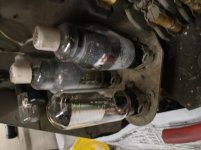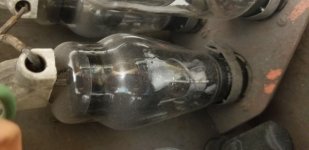Larrys Metal Fab
Plastic
- Joined
- May 6, 2017
Well I'm slowly back at trying to figure out what's wrong with my lathe. I have pretty much figured it's the 3c23 tubes. I have ordered a number of them from eBay. When I installed them I get no blue light but I do get what appears to be moisture in the tube when the filaments have been on for a minute or so. Not being a tube guy I don't know what is going on other than the vacuum / argon has escaped over the years. I measured the filament voltage and I get 2.6 volts, so I know I'm getting the proper voltage but I have no idea what else is going on other than just bad tubes. If someone could give me a heads up on what's going on I would really appreciate it because this has been a very frustrating experience for me.
Thank you guys very much
Larry B.
Thank you guys very much
Larry B.
Last edited by a moderator:





